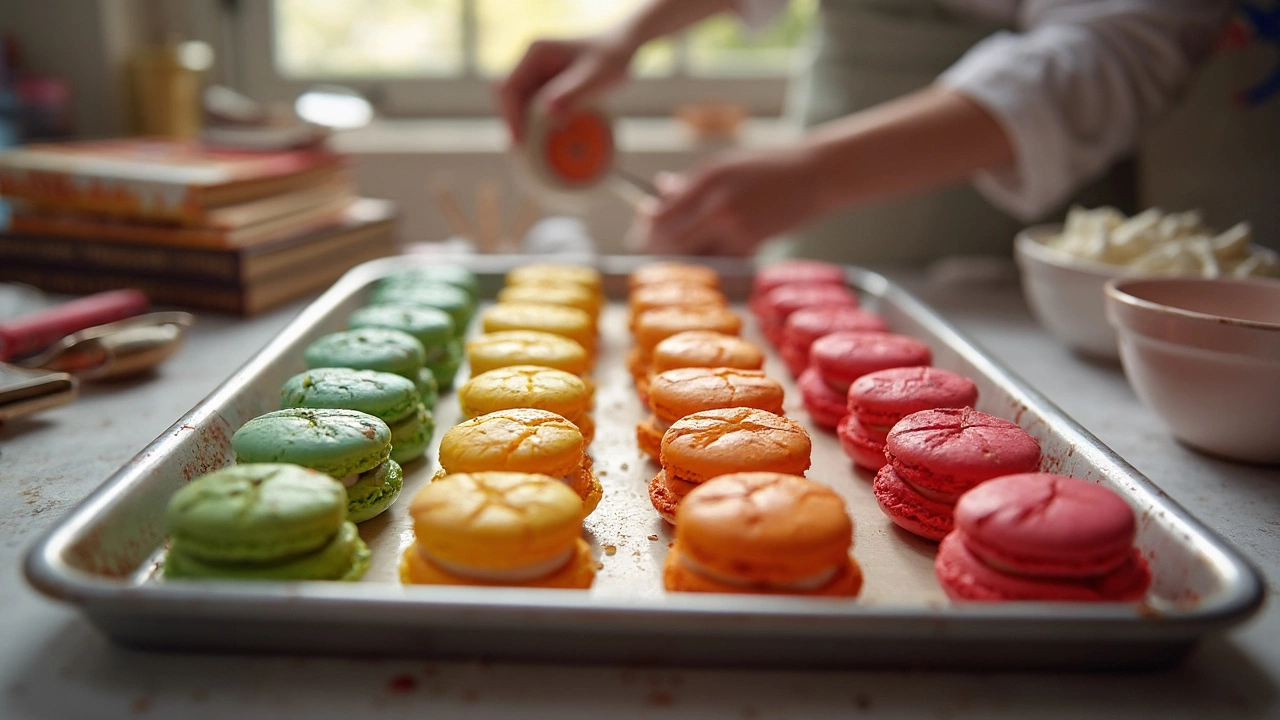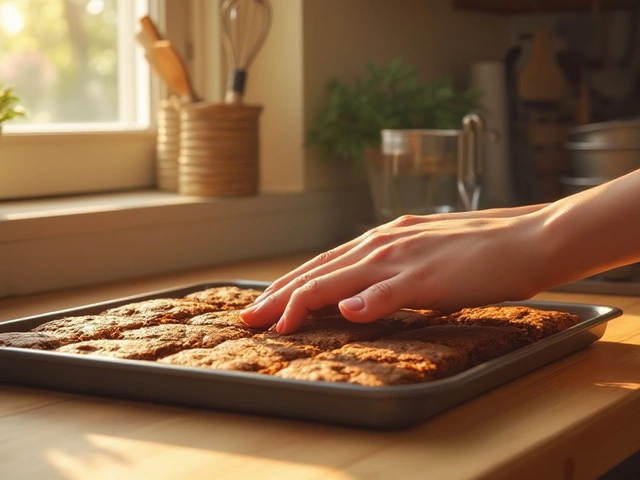Macaron Troubleshooting: Fix Common Issues Fast
If you’ve ever pulled a tray of macaron shells out of the oven only to see cracked tops or hollow centers, you’re not alone. These delicate French treats demand precision, but a few simple adjustments can turn a disaster into a batch of perfect pastries. Below you’ll find the most common problems and the exact steps to fix them, so you can stop guessing and start nailing macaron after macaron.
Why Macarons Crack, Spread, or Stay Hollow
Cracks usually mean the batter was over‑mixed. When you stir too long, the macaronage loses its glossy sheen and the shells can set too quickly, creating a split. On the flip side, a runny batter can cause spreading, which leaves thin, uneven shells. Oven temperature is another big factor—too hot and the shells will rise too fast, cracking the tops; too cool and they won’t develop the smooth, shiny finish. Humidity plays a sneaky role too; extra moisture in the air weakens the shell’s structure, leading to cracks and gaps.
Hollow centers are a sign that the shells didn’t develop the right “foot.” This happens when the batter isn’t rested long enough before baking (also called “forming”), or when the oven’s heat is inconsistent. A weak foot also means the shells can collapse when you move them, causing the dreaded “hollow” look.
How to Get Smooth Tops and Even Feet Every Time
Start with a perfectly measured batter. Use a kitchen scale for flour and almond meal; even a gram off can change the texture. Sift the dry ingredients at least twice to avoid lumps that cause uneven rise. When you pipe, aim for 1‑inch circles and tap the tray gently on the counter three times to release air bubbles.
Let the piped shells rest until they form a skin—usually 30‑60 minutes at room temperature, but cooler kitchens may need longer. You’ll know they’re ready when a light fingertip press doesn’t leave a dent.
Preheat your oven to 150°C (300°F) and use an oven thermometer to verify the actual temperature. If you have a convection setting, stick to the regular bake mode to avoid uneven heat. Place the tray on the middle rack and bake for 15‑18 minutes without opening the door. When the shells lift easily off the parchment, they’re done.
After baking, let the macaron shells cool completely before removing them. This helps the foot set and prevents cracks from sudden temperature changes. If you notice a few that are still a bit soft, let them sit an extra few minutes; the residual heat will finish the job.
Finally, store the shells in an airtight container at room temperature for up to two days, or freeze them for longer storage. Pair them with buttercream, ganache, or jam, and you’ll have a professional‑looking batch without the usual headaches.
By measuring precisely, respecting the resting time, and controlling oven heat, you’ll eliminate most of the common macaron mishaps. Keep these steps handy, and you’ll spend less time troubleshooting and more time enjoying the sweet, chewy results.

Why Do Macarons Crack? The Science Behind Those Pesky Shells
Cracked macarons can ruin even the most careful baker's day. This article explains exactly why macarons crack during baking, with details about common mistakes and the science behind them. You'll discover practical tips to avoid mistakes like overmixing, wrong oven temperature, or using the wrong meringue method. Get specific advice to help your macarons come out of the oven with smooth, flawless shells. Real kitchen-tested fixes, backed by hands-on experience, make this guide extra practical.
View More




